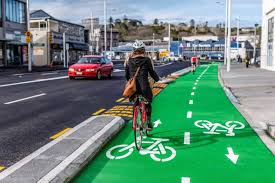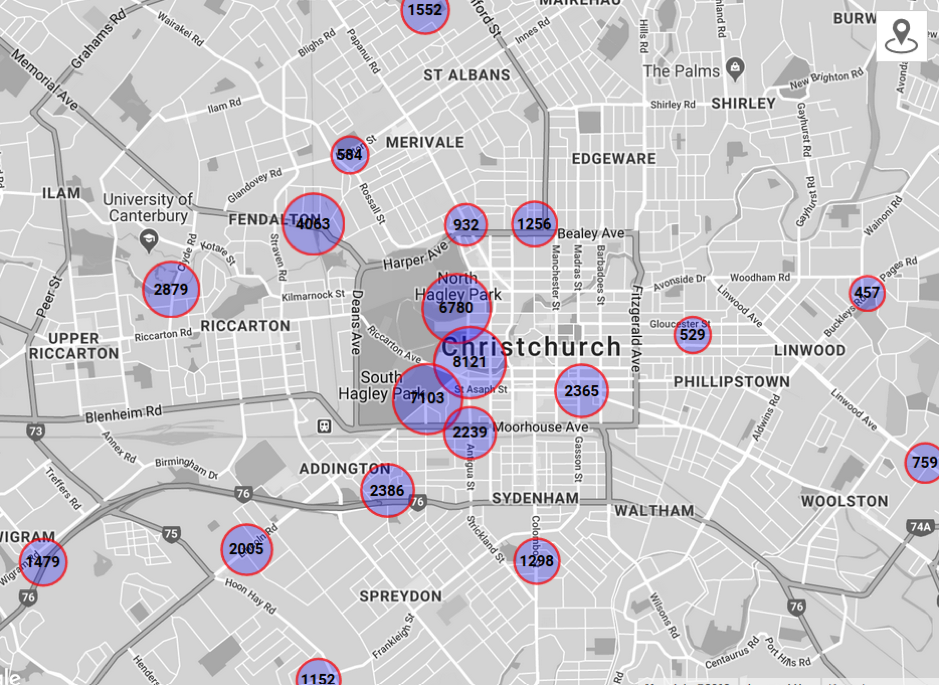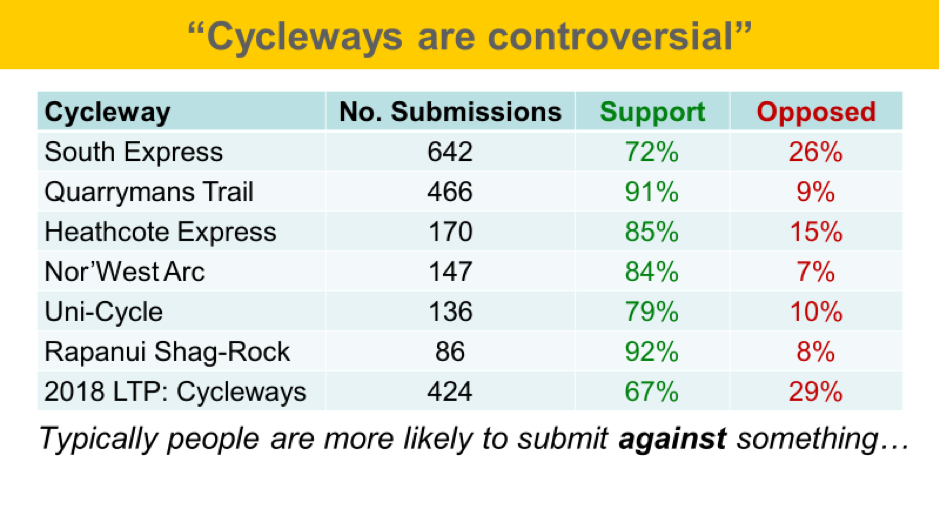
It has been interesting to listen to the bullshit which has been spoken about cycleways during the election campaign. I’m sure most of us agree that the St Asaph Street cycleway is over the top, but the rest are wonderful. I congratulate everybody who has been involved in making them happen.
I now ride a bike and I am very grateful that it is now possible to find safe routes around this City. And, it will become safer as more cycleways open. At the great transport session by Glen Koorey last week Councillor Mike Davidson was there and I asked him to write something about the thinking behind the cycleway spend.
Mike wrote this, and it should silence the ill-informed critics. I’d like to thank him for supplying it:
This election we are hearing from a few candidates who are not happy with Council spending “too much on the cycleways” and the impact on rates. It happened last election and it’s not a surprise that it’s happening again. It’s been clear from listening or reading their comments, that they may have been misinformed. So, here are a few facts about the impact of the cycleways on rates:
The Major Cycleway Routes (MCR) Programme was approved by Council under Mayor Parker in 2013. The budget was a guesstimate, but it didn’t take long to discover that it was far too low.
Under the next Council it was increased to $164 million. This term, Council was informed that it was not able to use the rail corridor for a number of routes and with more experience in building the cycleways, in the 2018 Long Term Plan, the budget was increased to $256m and the timeframe was pushed out to 2028, 15 years after it started, not the original 5 years planned.
Yes $256 million is a lot. The MCR programme has 100km of cycleway at $2.56 million per km, which is a lot cheaper than in Wellington and Auckland and a hell of a lot cheaper than a road.
We have been fortunate that the cycleways have been heavily subsidised by NZTA and central government. NZTA pay for 51% of the total cost and we also received an additional funding through the urban cycle fund for many of them, which meant we were only paying for around 35% of the total cost.
Roughly 30% of the budget is spent on general infrastructure such as road surface or intersection upgrades that benefit everyone. That has been added to the cycleway budget.
Breaking down the dollars, using an average across the 15 years, (and I will ignore the extra tens of millions of dollars we received from central government and the 30% that benefit more than just people on bikes…)
49% of $256m = $125.44m (actual cost to the rate payer after NZTA subsidy). Which if this is spread over 15 years = $8.36m per annum.
For capital projects, adding $50 million expenditure creates roughly 1% rates increase. So, the city’s cycleway programme has an impact on the rates of approximately 0.17% per year.
There was a recent comment, from a Mayoral candidate, about the “proliferation of cycleways” in the city. The MCR programme is 100km of cycleways…added to our existing 50km so by 2028 Christchurch will have 150km of cycleways. With a transport network that is over 3000km, that is less than 5%. Not really a proliferation, simply catching up after decades of under-investment at a time that our climate needs us.
To back up Mike Davidson’s comments above here are two graphs which Glen Koorey showed at last week’s session. These are live weekly cycle counts. There are 50,000 cycle movements every day in this City:

The second matter relates to cycleways being contentious:

Leave a Reply